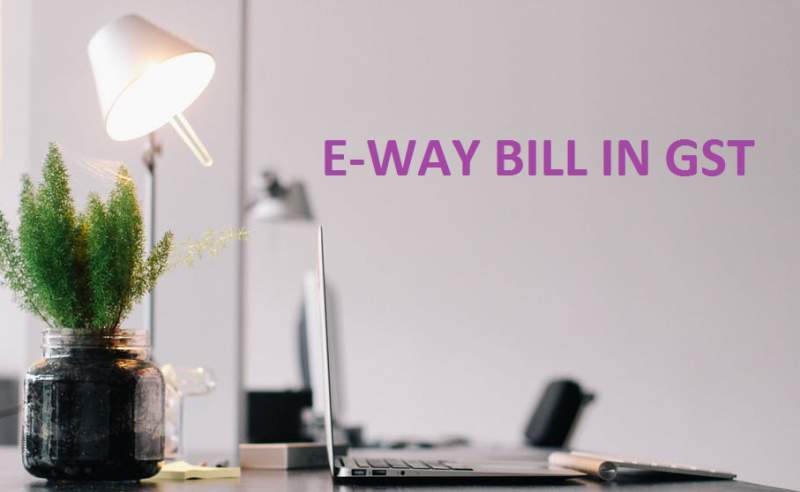GST E-Way Bill – What You Need to Know?
Posted on: 2018-01-16 08:28:55
What is e-way bill?
The e-way bill is basically an electronic way bill that deals with movement of goods. The bills can be generated at the portal that has been specifically created for this purpose. As per laws, goods worth in excess of INR 50,000 can only be transported in India by a registered individual who has the e-way bill. The bill can be generated, as well as canceled, via SMS (short message service). When you generate such a bill you get an e-way bill number (EBN), which happens to be a unique number, is generated. This number is only made available to the suppliers, the transporters, and the recipients.
Who should generate an e-way bill and why?
A person registered under GST must generate an e-way bill when she or he is moving goods that are worth more than INR 50,000. It could be moved from another registered person or to such an individual. However, a registered person, as well as a transporter, might also generate such a bill and carry it even if the value of goods being transported is less than INR 50,000. For this they need to fill up Part A of the Form GST EWB-01. This needs to be done before the goods are moved.
If the registered person is a consignor or consignee, or even the recipient of goods, then before moving the goods she or he would need to fill up Part B of Form GST EWB-01. The mode of transport in this case could be hired or owned. In case the registered person is a consignee or consignor and the goods are just being handed over to the transporter the Part B of said form would have to be filled up. In this case the registered person would need to provide information regarding the transport being done. This needs to be done in Part B of Form GST EWB-01.
Unregistered people would also need to generate an e-way bill. However, if in this case the supply is being made to a registered person the receiver will need to make sure that all the compliance related to these matters are properly met. In that case, she or he would have to act as if she or he is the supplier. However, if the goods are being transported within a distance of 10 km and that too in the same union territory or state and it is being done just so that the goods could be transported further the supplier would not need to fill up Part B of Form GST EWB-01.
However, if the supply is being made via air, railways, or ship then the Part A of Form GST EWB-01 needs to be filled up, either by the recipient or the consignor.
In case the supplier has failed to generate an e-way bill it is the duty of the transporter to generate the same, especially if the goods are being carried by road, rail, or air. This needs to be done before the goods are moved. The e-way bill in this case can be generated based on the information provided by the registered person in Part A of Form GST EWB-01.
When should an e-way bill be generated?
An e-way bill has to be generated when goods worth more than INR 50,000 are being moved. It could be for a supply or even for a return. It could also be because of inward supply being done by an unregistered person. In this case, the term supply could be defined as a transaction that may be done for some consideration – money for example – during the course of the business or later on. It could also be a supply without any consideration. This means, selling of goods in lieu of payments, transferring goods between branches, or even barter or exchange where goods – and not money – are being exchanged.
Purpose of e-way bills
E-way bills are being done with the aim of making sure that all the goods being transported are compliant with the laws of GST. It is also highly effective when it comes to tracking movement of goods as well as limiting tax evasion.
Validity of e-way bills
The validity of e-way bills depends on the distance that is being traveled by the goods. Normally the bases of calculation are the time and the date at which the bill was generated. In case the distance traveled is less than 100 km then it would remain valid for a day. However, for every 100 km and less after this an extra day would be added to the period.
What happens if the goods cannot be transported within the validity period?
If due to exceptional circumstances the transporter is unable to take the goods to the desired location then it can generate a new e-way bill. However, it would also need to update the relevant details in Part B of Form GST EWB-01.
When is an e-way bill not needed?
If the goods are being delivered through a non-motor vehicle then an e-way bill will not be necessary. Similarly, an e-way bill would not be applicable for goods that are being transported from ports, air cargo complexes, airports, and land customs stations to container freight stations (CFSs) and inland container depots (ICDs) so that the Customs could clear them. If the goods are being transported over a distance of less than 10 km and that too within the same state then the bill will not be necessary. The e-way bill is also not necessary in case of certain specified goods.
